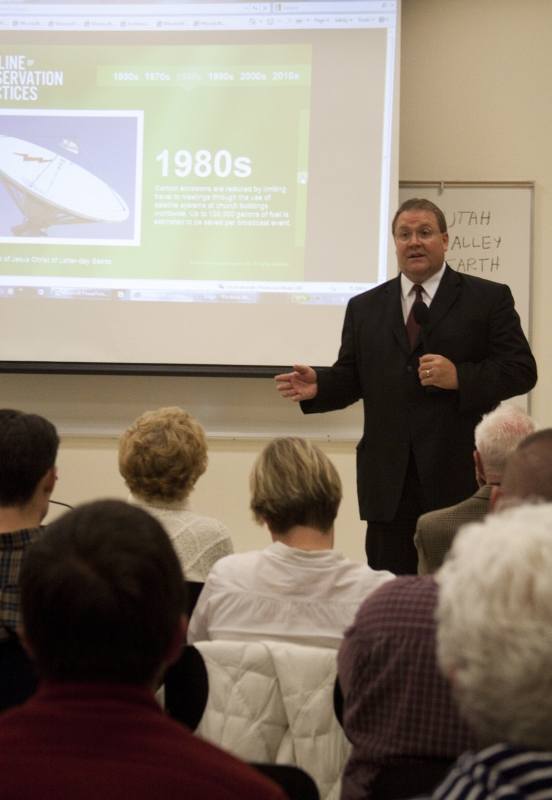
By Nick Barnes
From low-flow toilets to reusing old buildings as temples, The Church of Jesus Christ of Latter-day Saints is in the beginning phases of making its buildings greener.
The Utah Valley Earth Forum hosted Jared Doxey, director of architecture, engineering and construction for the church, as its speaker Thu rsday night.
The presentation began with a brief history of the energy-efficient practices of the LDS Church since the early 1950s.
Among the examples cited by Doxey were members in island nations capturing rainwater off the roofs of their meetinghouses to use for plants, the church office building using geothermal heat since the 1970s to cut energy costs, and low-flow toilets being installed in meetinghouses to cut water usage.
With the help of his team members, Doxey designed five new prototype buildings for the church that will receive LEED certification, three of which are completely solar powered.
LEED, or Leadership in Energy and Environmental Design, is a certification given to buildings that verify through a third party that the building is saving energy and water and reducing carbon dioxide emissions.
As Doxey gave his presentation, many audience members asked questions about the plans for greener Latter-day Saint meetinghouses with skepticism about the cost-efficiency of the solar panels.
Doxey responded with a simple statement about energy costs.
“Solar prices are going down, and energy costs are going up,” Doxey said. “I will let you draw your own conclusions. Churches operate only 15-20 hours per week. The panels produce solar power when the buildings are unoccupied that can be sold back to the power grid.”
Doxey pointed out that before one of the buildings was complete they were building power credit.
“Two months before construction had finished, the power company was giving the church $20-30 a day in credit for power,” Doxey said.
Doxey showed photos of many new prototype meetinghouses that are being tested right now.
In Pahrump, Nev., a white reflective roof was used on a meetinghouse that reflects up to 80 percent of the heat load from the roof, and root sensors were used on plants to prevent overusage of water.
Kevin Burr, a professor of sustainability at BYU and developer of the course for sustainability, said the little things in life need to be changed to really make a difference.
“There are a lot of things we just don’t think about because we don’t know any better,” Burr said. “Once we as a society begin to understand the principles of sustainability, we will be able to become stewards of what our Heavenly Father has given us. We have a responsibility to it.”
Asked why the Church was doing all these things, Doxey said they are simply trying to do what’s best for the environment.
“We’re not looking for a plaque on the wall, we’re looking for lessons learned,” Doxey said. “We’re after doing the right thing for the right reasons,whether or not there is a plaque on the wall.”
Article Courtesy of: http://universe.byu.edu
Photo by Stephanie Rhodes. Jared Doxey speaks at the Provo Library.

